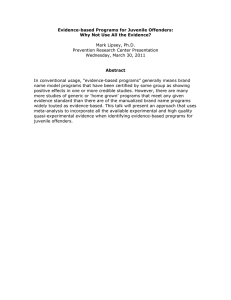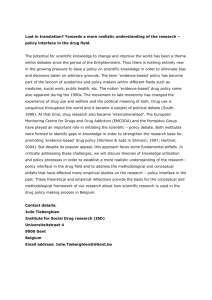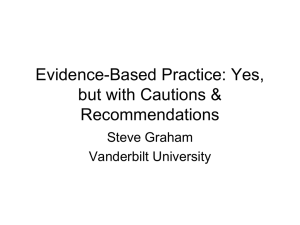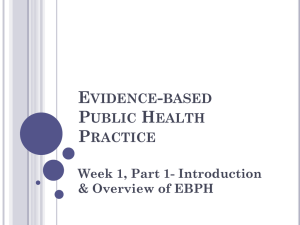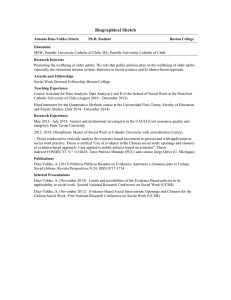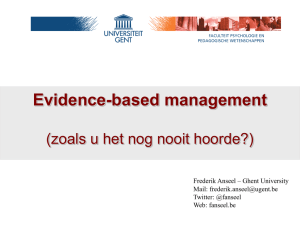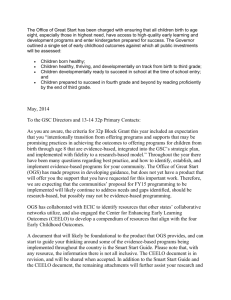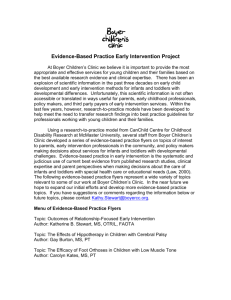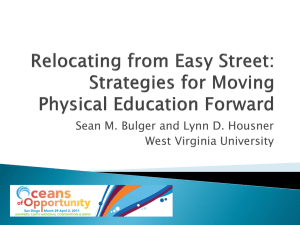PowerPoint - Childhood Development Initiative
advertisement
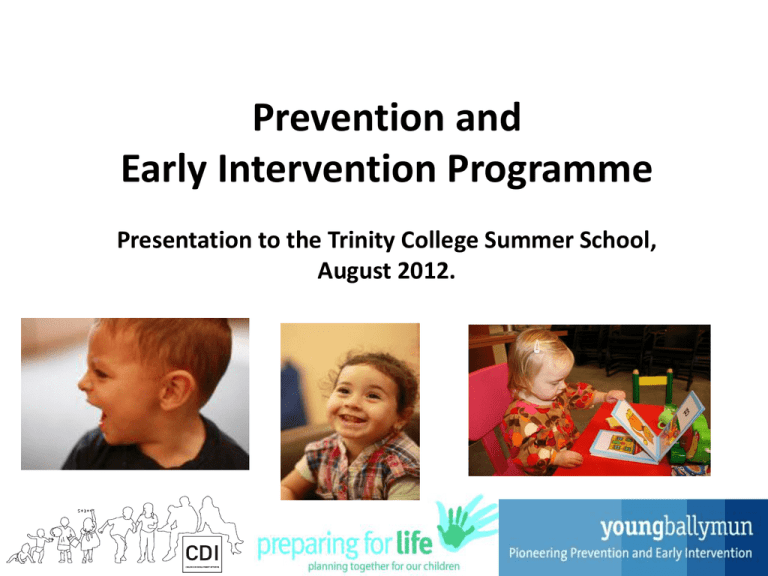
Prevention and Early Intervention Programme Presentation to the Trinity College Summer School, August 2012. Presentation Overview: • What is the Prevention and Early Intervention Programme (PEIP)? • Why was PEIP needed? • What does the PEIP do? • What have we learned? What is Prevention and Early Intervention? • Strategies aimed at realising the full potential of children, families and communities; • Building skills and capacities to prevent the occurrence of problems, or prevention of a problem getting worse; • Intervening at a young age or early on in the development of a difficulty. Why Prevention and Early Intervention? • Despite investment, historically poor outcomes in areas of disadvantage; • Minimal resources targeted at beginning of life cycle; • Focus on crisis response at expense of promotion, prevention and early intervention; • Absence of evidence-informed, integrated service design; • Lack of community and parental engagement and trust in services. Integrated prevention and early intervention • Costly and intractable educational, health and mental health problems occur because children families don’t have appropriate and/or sufficient services, early enough • Prevention and early intervention can improve outcomes for children at risk of poverty • Integrated Prevention and Early Intervention promotes – secure attachment – age-appropriate social and emotional development and pro social behaviour – positive protective relationships – language and literacy skills – mental health. • Prevention and Early Intervention has a critical role to play in preventing tragic and costly consequences for children and families Prevention and Early Intervention Programme • 3 area-based prevention and early intervention sites – Ballymun: youngballymun – Dublin 17: Preparing for Life – Tallaght West: Childhood Development Initiative (CDI) Identified due to: – Leadership in the communities; – Willingness to engage in new approaches; – High levels of disadvantage on a range of indicators; – High child populations. Common Statistics (2005): • Unemployment • 14.5% (three times the national average) • House hold headed by lone parent • Educational attainment • 50% • Mental health needs • Behaviour • Twice national average of early school leaving • 30% + adults receiving treatment for depression • 25% 4 year olds displayed behavioural difficulty. Common Features: • Jointly funded by Atlantic Philanthropies and Department of Children and Youth Affairs – total investment of €36m over 5 years; • Driving evidence-based, outcomes-focused prevention and early intervention approaches in children’s services; • Innovative delivery; • Rigorous evaluation. Programme Themes • A life cycle approach – – • Evidence of what works – • Needs-led strategies, drawing on evidence-based approaches Integrated services model – – • Starts pre birth, continues through infancy, early childhood, school years and community wide Focus on 0-6 years period, particularly essential 0-3 foundation stage Fostering widespread engagement, collective identification of issues, development of responses and ownership of strategy Collective realignment of capacity to deliver evidence-based services A focus on implementation – Rigorous attention to practice detail, regular review of delivery, culture of continuous improvement Practice themes • • • • Activate health and community services to build and mobilise parental resources from pregnancy, infancy and throughout children’s lives Develop high quality early years care and education services Engage with schools to implement balanced literacy frameworks and social and emotional development initiatives Work with community providers to amplify capacity in youth mental health, restorative practice and community safety Overarching messages for improving children’s lives 1: Mandate integrated prevention and early intervention in service provision for children and families 2: Drive the implementation of area-based approaches to tackle child poverty 3: Build requirements for evidence-based practice into funding conditions What have we learned about evidence-based practice? • • • • It is a new approach to children’s services It values evidence and mandates accountability Requires a strong information base Investing in evidence-based approaches has the greatest chance of being effective • Services must be developed in response to identified need • Initiatives aimed at improving outcomes for children need to be strongly based on evidence, rigorously implemented and evaluated. Thank You For further information visit our websites: www.youngballymun.org www.preparingforlife.ie www.twcdi.ie The Prevention and Early Intervention Programme is jointly funded by The Atlantic Philanthropies and The Department of Children and Youth Affairs
